DOI:10.32604/iasc.2022.020576

| Intelligent Automation & Soft Computing DOI:10.32604/iasc.2022.020576 |  |
| Article |
Performance Analysis of Photovoltaic Systems and Energy Return on the Environment Economy
1Department of Electrical Engineering, Communication Engineering, Sana’a University, Yemen
2Department of Computer Science, King Khalid University, Muhayel Aseer, Saudi Arabia
3Faculty of Computer and IT, Sana’a University, Sana’a, Yemen
4Department of Computer and Self Development, Preparatory Year Deanship, Prince Sattam bin Abdulaziz University, AlKharj, Saudi Arabia
5Department of Information Systems, King Khalid University, Muhayel Aseer, Saudi Arabia
*Corresponding Author: Manar Ahmed Hamza. Email: ma.hamza@psau.edu.sa
Received: 29 May 2021; Accepted: 16 July 2021
Abstract: Using fossil fuels and non-renewable forms of energy has many adverse effects on the global ecosystem, and global demand exceeds the limited available resources. Renewable energy is one of the essential elements of social and economic development in any civilized country. This study comprises a feasibility study of the implementation of PV systems in a hybrid diesel network and analyzes the relationship between the effective uses of photovoltaic systems, the return of energy to the environment, and that country’s national economy. As a potential solution for the public and private utilities, the sunny web design application was used to calculate of all equipment requirements, presents a cost-effective analysis of electricity saving, and simulate PV/diesel-hybrid systems. Detailed results show that using photovoltaic systems can foster positive developments in several areas (for cost comparisons, effective savings, sensitivity analyses, photovoltaic system costs, photovoltaic system financing, generator operation, and investment costs) for up to 20 years or more and simultaneously reduce CO2 emissions significantly. Therefore, this study conducts an intensive assessment of renewable energy potential for government and private facilities (ministries, universities, hospitals, schools, etc.), which will provide useful insights for renewable energy engineers.
Keywords: Hybrid renewable energy; economic dispatch; energy efficiency; photovoltaic performance
Energy is a critical element of social and economic development in any civilized country. Using fossil fuels and non-renewable forms of energy has many adverse effects on the global ecosystem, and global demand exceeds the limited available resources [1–3]. The use of fossil fuels and non-renewable forms has numerous adverse ecological effects, regionally and globally [4]. Therefore, many countries are following various paths and allocating the necessary sums to develop products and conduct research related to the exploitation of solar energy as one of the essential sources of alternative energy sources to oil and gas [5–8]. The global interest in searching for energy resources to reduce the problems of using fossil fuels has led to the emergence of research in various energy resources, including hybrid systems. These systems operate with full conventional and non-conventional sources [9–14].
We also find that the third world countries [15–19] are facing a bigger problem, which is the general electricity outage due to the political and financial conditions in some countries, which are considered one of the main problems in the country. Because the generation of electricity from the main stations of government and private service facilities (hospitals, ministries, schools, universities, and residential buildings) has stopped, and thus the absence and rise of petroleum products and the absence of the government.
Countries with poor access to electricity and heavy reliance on isolated diesel generation make them a promising candidate for off-grid solar modulation. Thinking about finding solutions to these problems has become an urgent necessity. Renewable energy (solar energy) is the best solution to the reality of those countries and at the same time for many civilized countries.
The research aims to provide a solution to one of the basic problems plaguing the environment. This is done through an analytical study of the use of PV/Diesel Hybrid systems through the application of Sunny Web Design, which is characterized by a variety of analyzes (cost comparisons, effective savings and sensitivity analyzes, costs of PV systems, and systems financing PV and investment costs) for twenty years. This strengthens and clarifies the current and future use of PV/Diesel Hybrid systems in government and private organizations from an economic and financial perspective. The paper also contributes to encouraging governments, the private sector, and engineers to provide and use hybrid systems and renewable energy.
The rest of the article is structured. In Section 2, we explain the current work done so far. The methodology is presented in Section 3. Simulation and discussion are provided in Section 4, and finally, we conclude the article in Section 5.
Various Many studies have been done on this topic; for example [20–22], Kumar et al. [15] presented a case study of a PV/battery/diesel hybrid power system for continuous electricity supply to a school in India. The study used simulation software for improvement, technical and economic analysis, and the effectiveness of reducing carbon dioxide emissions for this hybrid power system compared to a standalone diesel generator system. The simulation result shows that the solar PV diesel system is the most cost-effective and environmentally friendly compared to the diesel/battery generator system, as the system provides a 95% reduction in carbon dioxide production.
Adesanya et al. [16] presented assessing the economic viability of PV/diesel hybrid systems in Nigerian private sector companies that use levelized cost of energy LCOE in captive power generation, and also analyzed policies that could facilitate investment in solar PV. Forty private companies were surveyed across Nigeria to study the potential fuel savings that a hybrid PV/Diesel system could achieve, and loads of three companies were modeled and simulated among them, which had savings between € 0.002 and 0.009/kWh. Alayan [17] was presented to integrate photovoltaic generators into a system connected to an unreliable diesel network in the Lebanese village of Khiam, in order to reduce the consumption and import of diesel. The study provided a load profile for 120 beds and a pre-design of the PV generator size, storage system capacity, and inverter type/size selection. In addition, simulations and financial analysis were conducted for four different designs starting from the current system (diesel generator DG—unreliable network), followed by (PV generator—unreliable network), then (PV—DG), and ending with the complete hybrid system (PV—DG—unreliable network).
The study showed a PV System sharing rate of 53% and a project life cycle of 25 years. The cost of producing electricity from the hybrid photovoltaic system will be reduced by 53% of the cost paid to the independent diesel operator, and the system will also provide for a reduction in the production of carbon dioxide by 65%.
Given the issues outlined above, we believe that it is essential to solving these problems, more importantly, hybrid energy shows extraordinary potential for developing and remote countries, many of which need rapid electricity growth, on the one hand, and on the other hand, civilized countries, the economy of states and the environment in general. As is conveyed in this research, a hybrid system consists of PV and diesel was selected to ensure continuous power savings by ensuring that the two power sources operate side by side. This work aims to conduct a feasibility study for the implementation of PV systems in a hybrid diesel network using sunny design software [23]. For the calculation of all equipment needs and to conduct a cost-effective analysis of the electricity-saving project, we mean here from the word project that it can be applied to any Corporation government or private sector, for example. The main general structure of the implementation steps of the research methodology is depicted in Fig. 1.
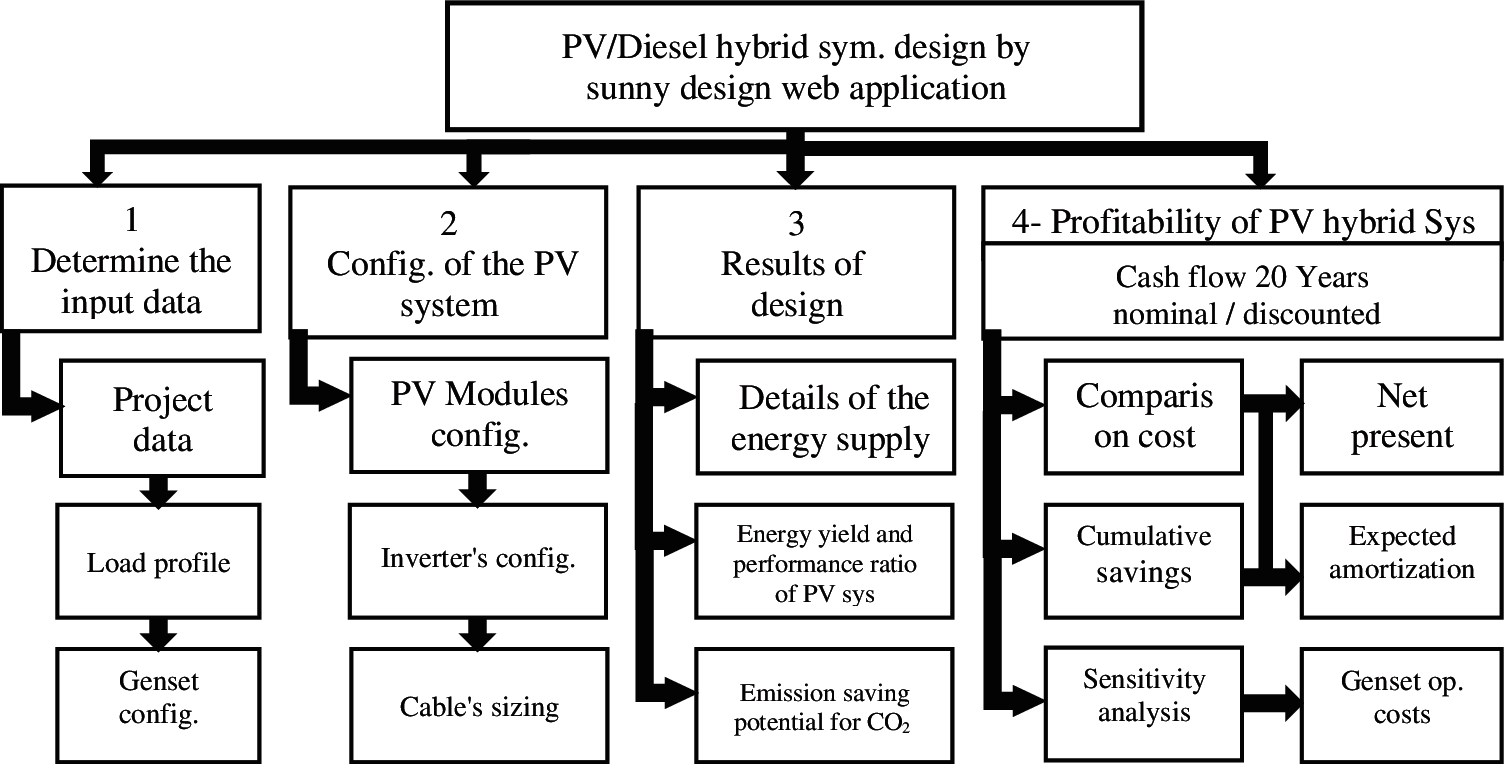
Figure 1: The general structure of the steps of the research methodology utilized in this study
In this paper, the proposed hybrid system is simulated and analyzed by the sunny design web software by using four different configurations: A PV project, a PV project with self-consumption, a PV project without grid connection, and PV-hybrid project. The PV-diesel hybrid system was selected in this study.
4.1 Determining the Input Data of the System
The input data that to needed in system design consist of several types as position coordinates of case study, load profile, and gensets configuration.
Project data contains the project name, customer, and location of the building.
It is essential to create a power load profile which is the total power required from a power system or subsystem over a specified period (hours, days, etc.). What is the best way to download such a system for time changes? The data of the load profile depends on the main daytime loads of the service facilities in the ministry, which are detailed in Tab. 1. Note that the Project works during the day only [24].

To defining the load profile using the sunny web design application, the selecting of the breakdown of the seasons was accrued as shown in Fig. 2, and the daily consumption at all seasons was entered according to the list in Tab. 1 above and can be shown in Figs. 3 and 4 below. The sunny design web software was calculated the load profile as 62425 W.

Figure 2: Determining the date of the season in the sunny design web app
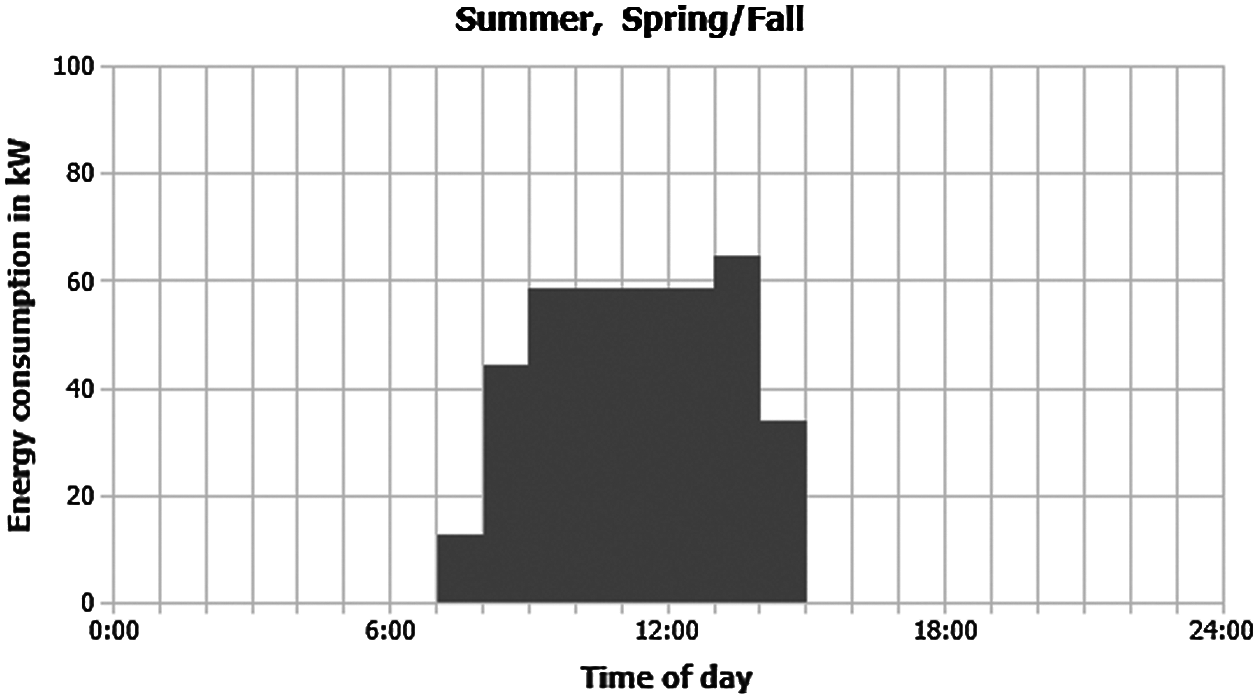
Figure 3: The daily load profile in summer/spring/fall
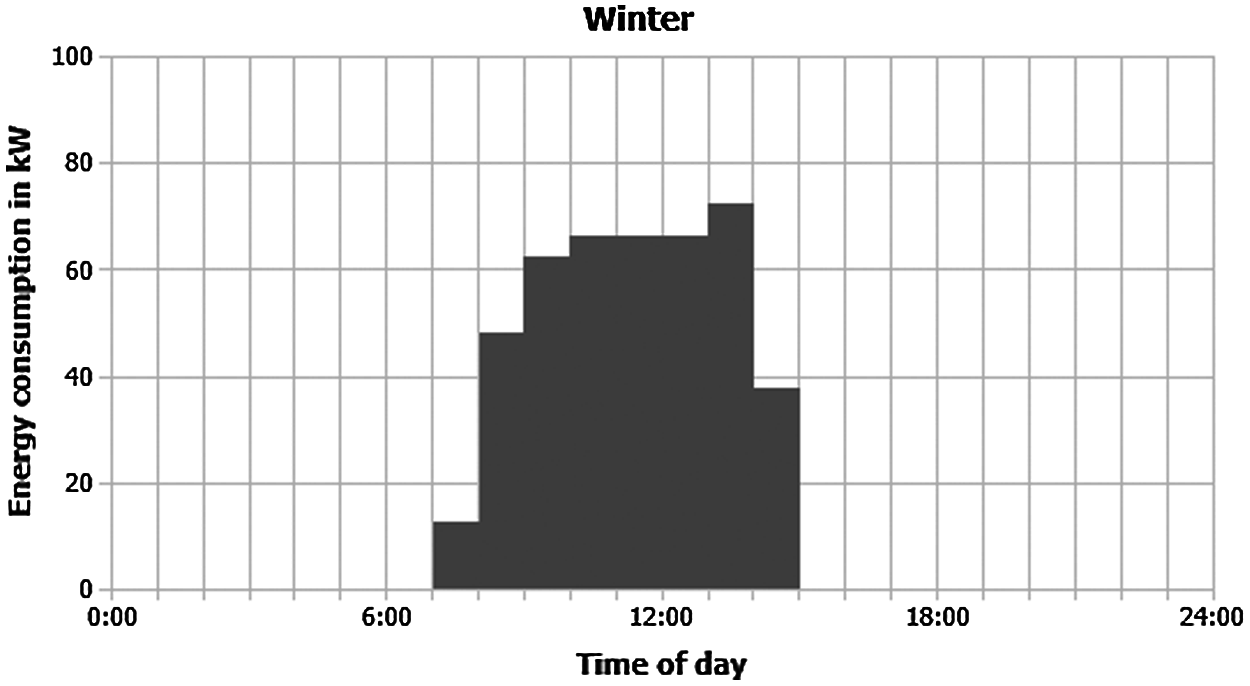
Figure 4: The daily load profile in winter
Then the average weekly profile by seasons was entered as can be seen in Fig. 5 below. The average seasonal profiles are shown in Tab. 2.
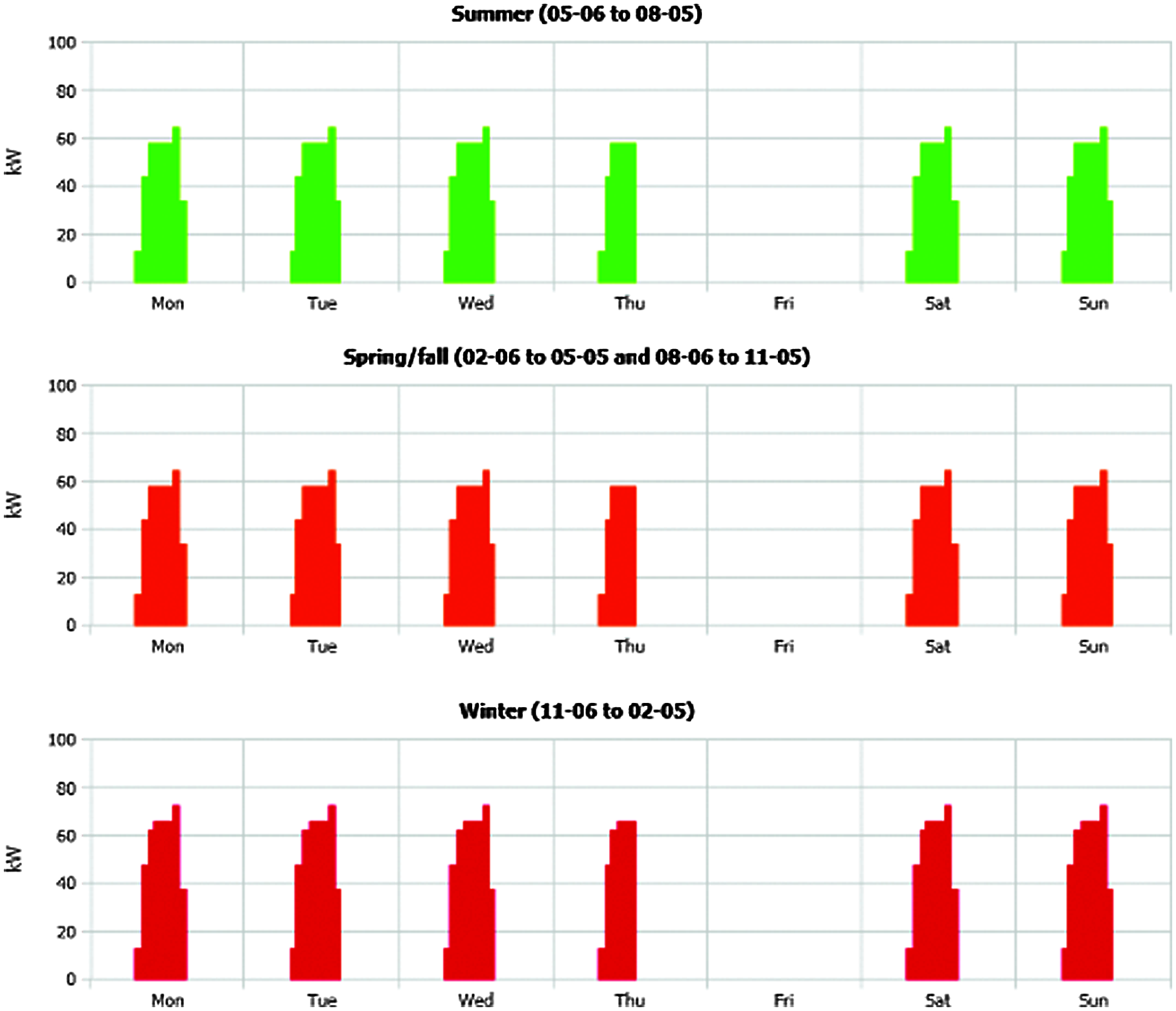
Figure 5: Average weekly profile of the seasons

The generator was diesel-powered, and its active power must be greater from load profile 62425 W, as 64 kW. The common power factor was 0.8 was chosen, and the capacity become approximately 80 kVA. The minimum load was chosen 20%. Tab. 3 shows the design conditions of genset.

4.2 Configuration of the PV System for Hybrid Renewable Energy
The next step in software is the configuration of the PV system, the PV system configuration contains PV modules, inverters, and cables.
4.2.1 PV Modules Configuration
When starting that, the software introduces a suggestion to select the optimum PV power (44 kVA) needed to share with genset. To guarantee a smooth operation with the gensets, the share of the PV power in the PV hybrid system must not, however, exceed the technical maximum. The technical max is 60% of the apparent power of the gensets (48 kVA) operated at the same time during the day as illustrated in Fig. 6.
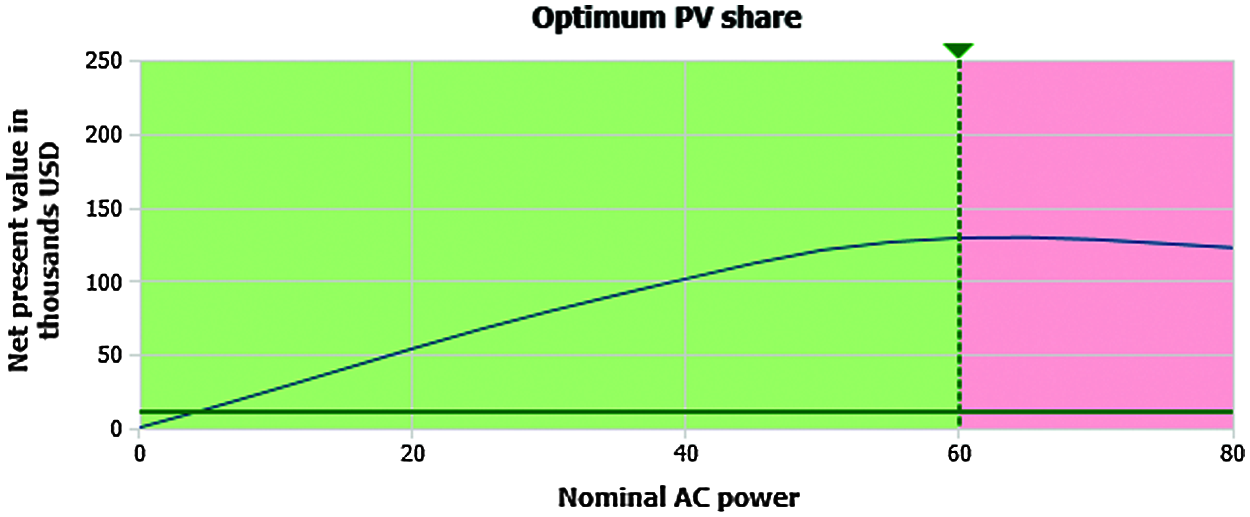
Figure 6: Suggestion to select the optimum PV power needed to share with genset
In this design, the 300-watt PV module was chosen, and a total number of PV modules was 144, which has been divided into three arrays, each containing 48 modules with a capacity of 43.2 kW.
In order to achieve great compatibility between the inverters and the PV arrays, 3 inverters with a capacity of 15 kW were selected (inverters for each array). The PV modules and inverters designed data is revealed in Tab. 4.

The power loss of the selected cable sizing can be calculated here. The recommends a relative power loss with the rated operation of less than 1% on the AC side or the DC side. Tab. 5 shows the cables sizing and power loss of the system design [25].

After defining the load, the PV and generator were configured. The hybrid system configuration is shown in Fig. 7.

Figure 7: Hybrid power system structure
This subsection presents a discussion in detail of the proposed hybrid system in the following subsections.
4.3.1 Details of the Energy Supply
The annual energy consumption in this hybrid system reached 444 kW, which resulted from the annual generation of the generator of 41,412.68 kWh, consuming 17,823 liters of diesel annually, plus the annual use of PV system of 48,361.07 kWh, saving 11,177 liters of diesel annually as illustrated in Fig. 8 and Tab. 6. We note that the PV share of the energy supply reached 53.9%, which is a large value close to the maximum value of 60%.
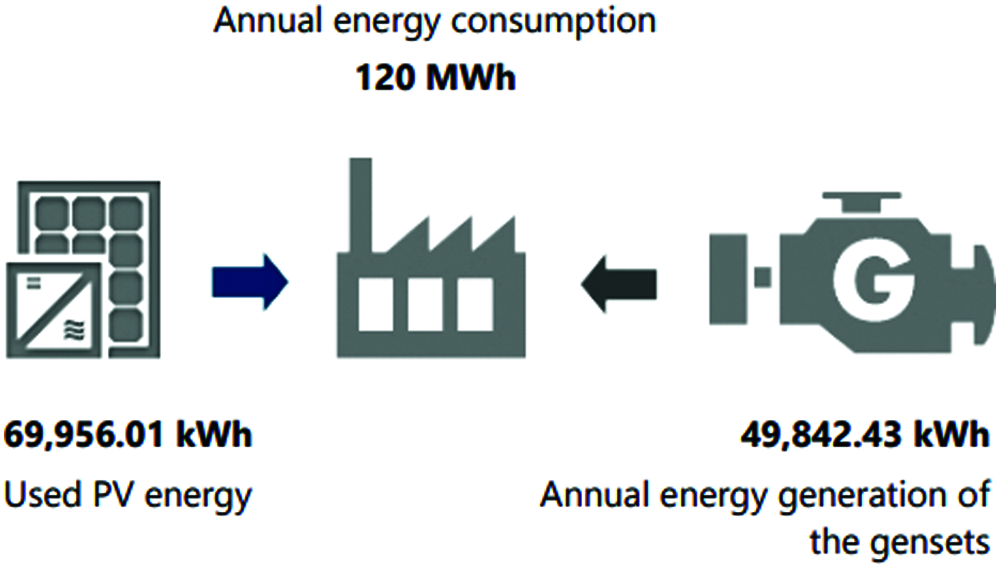
Figure 8: The annual energy consumption in this hybrid system

4.3.2 Energy Yield and Performance Ratio of PV Systems
The maximum available PV energy annual is 85,492.58 kWh, but the use of PV energy is 48,361.07 kWh, where the used PV share ratio is 56.6%. Fig. 9 shows the daily energy consumption, the daily maximum available PV energy, and daily used PV energy in the lowest and highest yield.
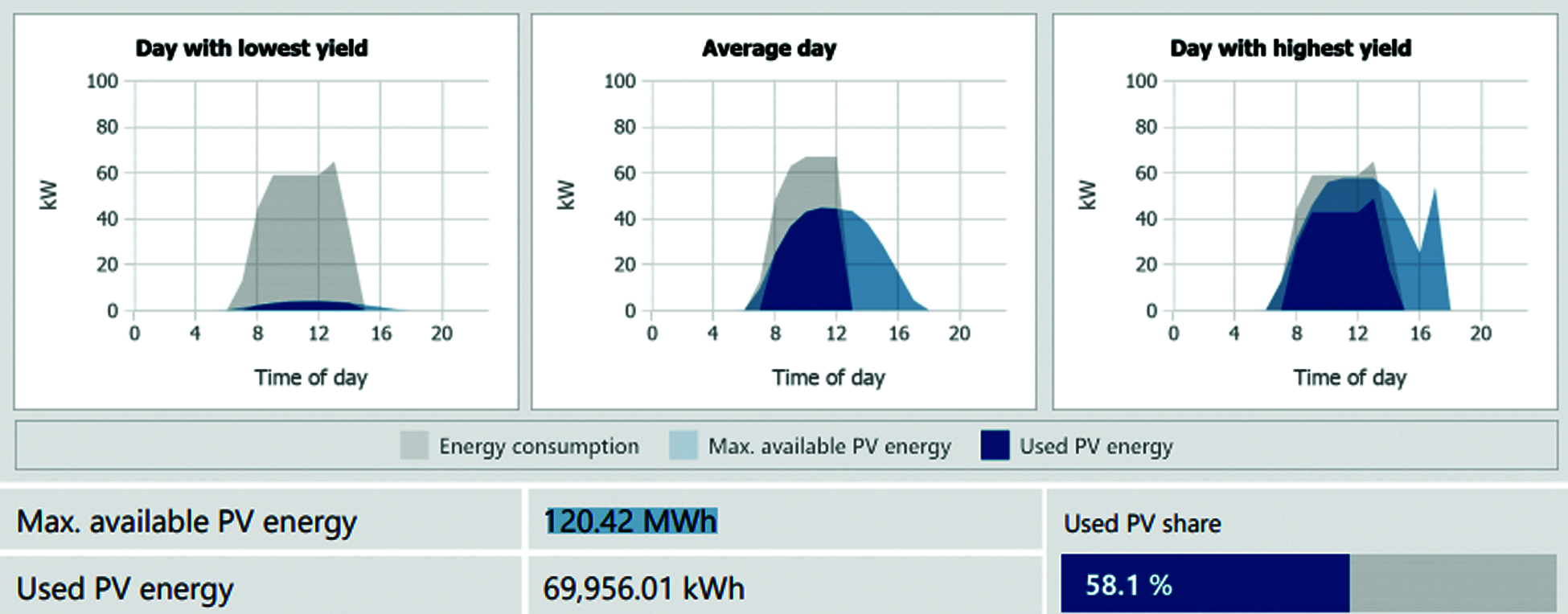
Figure 9: The annual daily energy consumption and available PV energy
4.3.3 Emission Saving Potential for CO2
It is known that burning fossil fuels to produce power produces carbon dioxide gases that are harmful to both the environment and humans alike. Because carbon dioxide gas is toxic and affects human health, constant exposure leads to adverse effects. When it accumulates in the atmosphere, it fosters global warming. Therefore, it is necessary to reduce CO2 emissions by using renewable energy and the aim of this study is to reduce the emissions of this toxic gas [26]. The fuel and CO2 savings potential per year is 30 tons and the relative fuel/CO2 emission savings potential per year is 38.5%, and shown in Tab. 7, below.

4.4 Profitability of the PV Hybrid System
In Tab. 8, note the profitability of the hybrid photovoltaic system, where the investment costs of the ready-made photovoltaic system (CapEx) are $ 43,200, and the annual fuel savings potential is about 11,177 liters annually, providing a cash value of $ 8,940 per year, making the expected amortization period less than 5 years.

For analysis of the cash flow, you can choose between nominal and discounted cash flow. In the cost comparison, the investment and maintenance costs of the gensets are not considered since they are almost identical for a PV hybrid system and a conventional genset system. The net present value using nominal and discounted cash flow also was shown in Tab. 8 [27], and the Figs. 10 and 12 show the cost comparison, cumulative savings, and sensitivity analysis for discounted cash flow (8.0% p.a. discount), whilst the Figs. 11 and 13 show the cost comparison, cumulative savings, and sensitivity analysis for nominal cash flow. It is apparent that the value of the generator in the first years is less and increases from the fourth year.
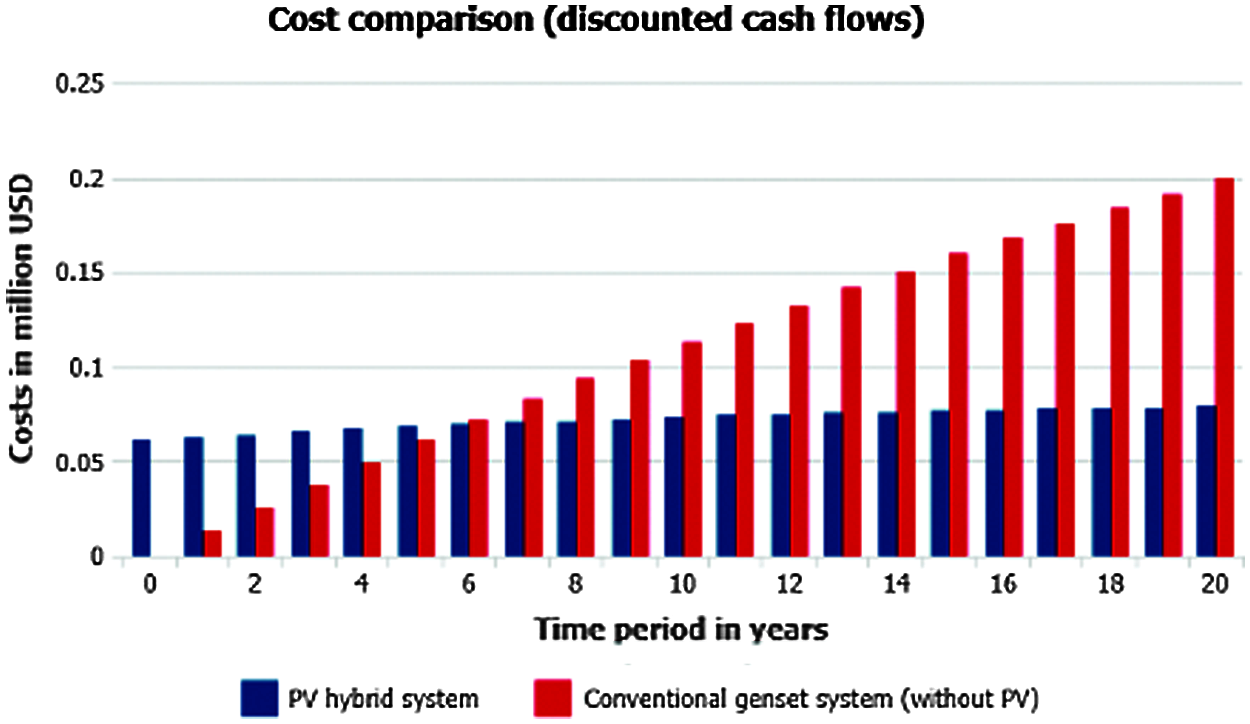
Figure 10: The cost comparison (discounted cash flow)
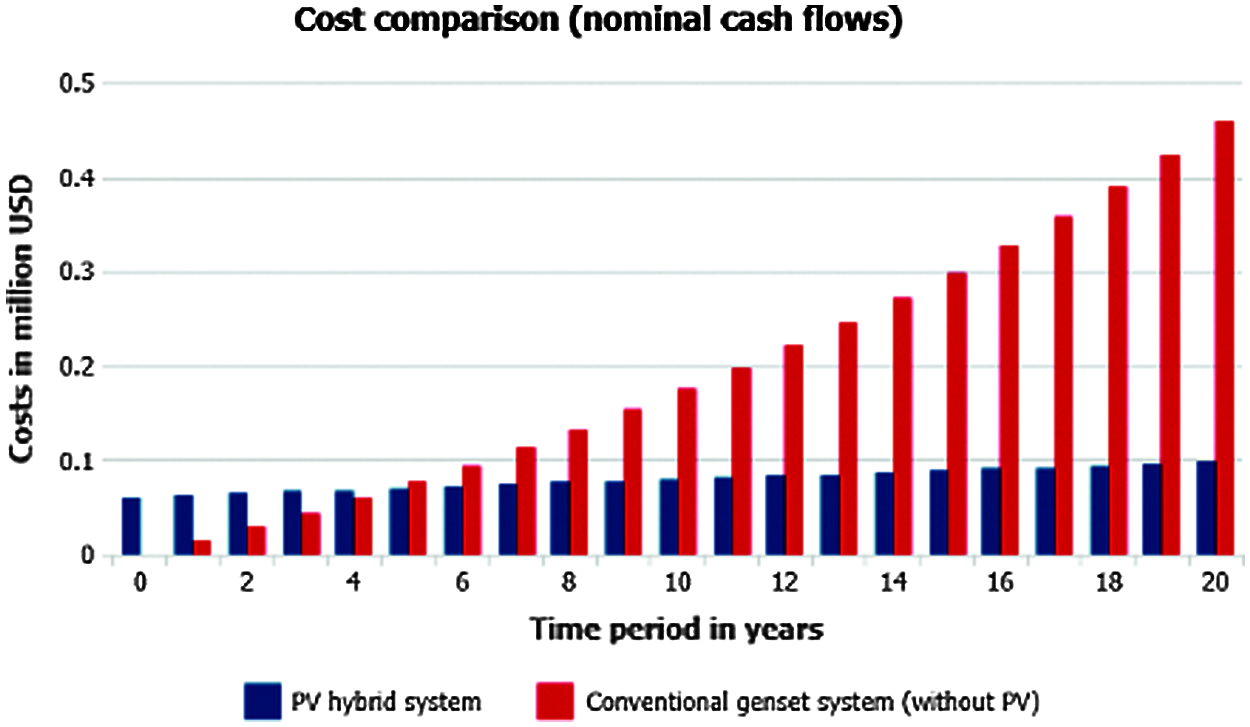
Figure 11: The cost comparison (nominal cash flow)
Figs. 12 and 13 show that the cumulative savings of cost at 20 years, that reach 78,882 USD in the discounted cash flow and 241,335 USD in the nominal cash flow.
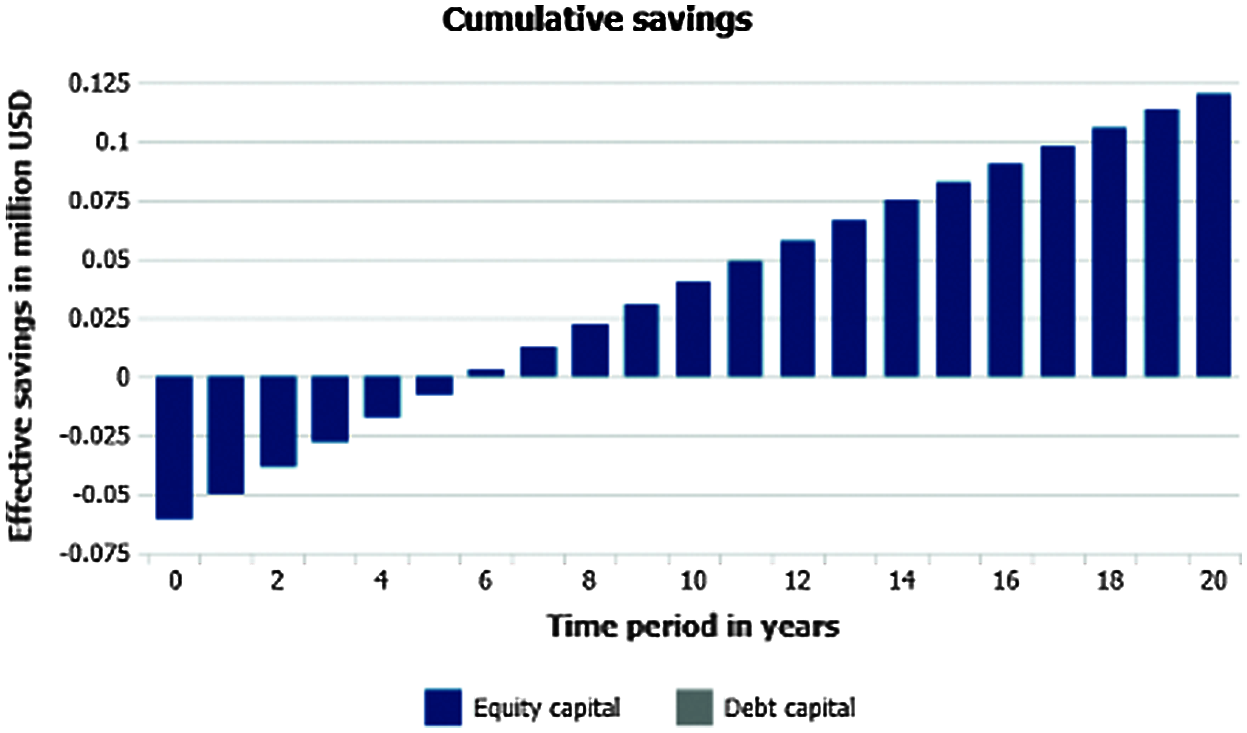
Figure 12: The cumulative savings (discounted cash flow)
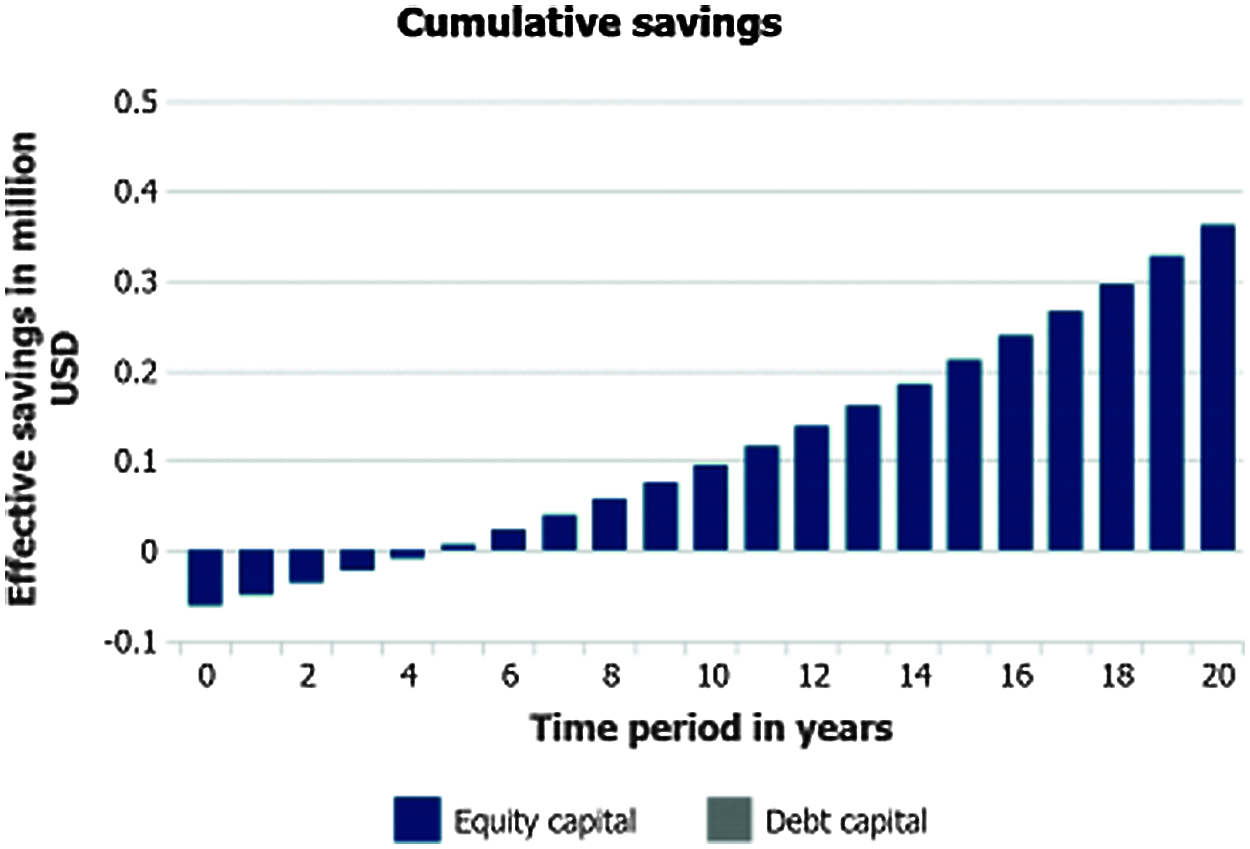
Figure 13: The cumulative savings (nominal cash flow)
Figs. 14 and 15 shows that the effective fuel cost of the generator decreased from a value of 0.8 USD/L to a value of 0.34 USD/L in the discounted cash flow and a value of 0.2 USD/L in the nominal cash flow. Tab. 9 shows that the average energy efficiency for genset is 2.32 kWh/l, while Energy generation costs (pure fuel costs) are 0.34 USD/kWh (given that the Effective fuel costs are 0.80 USD/l). But this value will decrease over time and after 20 years will become 0.146 USD/kWh. Annual increase in fuel costs has been considered to be 5% [28,29].


Figure 14: The analysis of fuel costs (discounted cash flow)
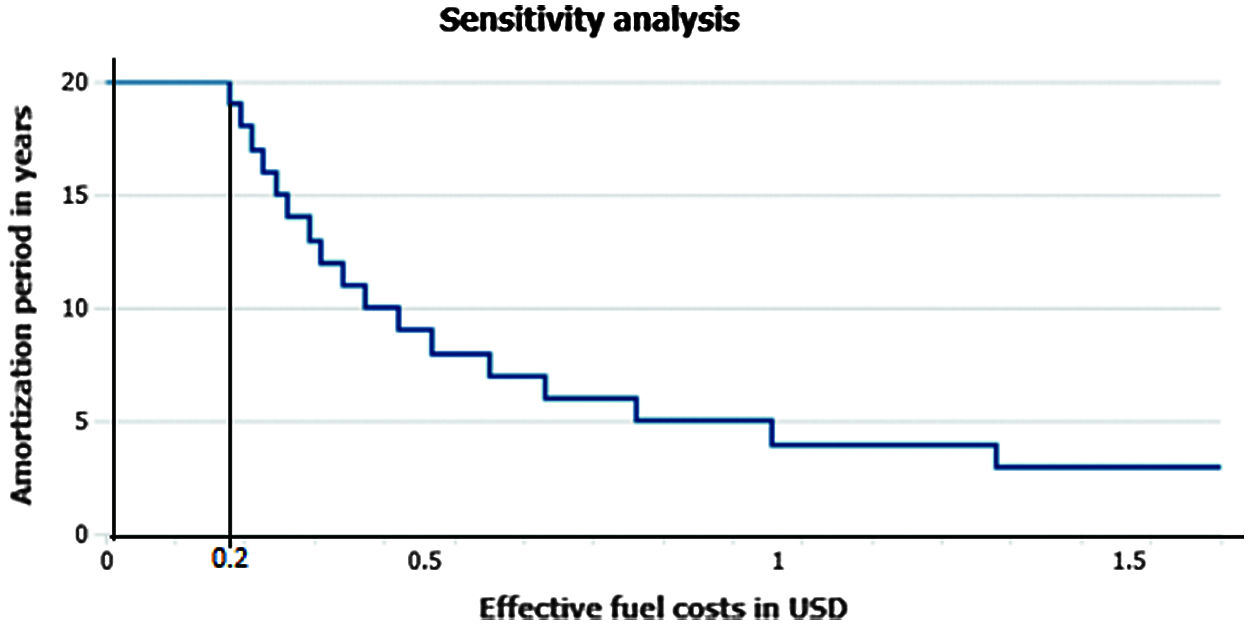
Figure 15: The analysis of fuel costs (nominal cash flow)
This study comprises a feasibility study of the implementation of PV systems in a hybrid diesel network. Sunny design web software have been used for the calculation of all equipment requirements, and also presents a cost-effective analysis of electricity savings from the proposed project watch that can be applied to any Corporation government or private sector, for example. The most important outcomes of the study can be summarized as follows:
• The total number of PV modules is 264 (230 W per module) and the peak power calculated by these is 60.72 KWp, with three inverters. The CapEx costs of the PV system is 60,720 USD.
• The annual energy consumption is 120 MWh, where the annual energy generation of the gensets is 49842 kWh with a ratio 46.1%, whilst the Used PV energy 69,956 kWh with a ratio 58.4%, and the expected amortization period in 5 years.
• The PV share of the energy supply (during the day) is 58.4%, and this ratio is very good and close to the upper limit 60%.
• The fuel consumption per year of the gensets was decreased from 37,893 to 21,441 Liter of diesel with a ratio 56.57%, where the annual fuel savings potential by PV system is 16,452 Liter with ratio 43.43%.
• The average genset efficiency is 2.32 kWh/L that equals 0.67% from the genset efficiency at nominal power (3.5 kWh/L).
• The net present value using discounted cash flow is 119,821 USD, and the net present value using nominal cash flow is 359,816 USD.
• The relative fuel/CO2 emission savings potential per year is 43.4%.
Funding Statement: The authors extend their appreciation to the Deanship of Scientific Research at King Khalid University for funding this work under Grant Number (RGP. 2/209/42) received by Fahd N. Al-Wesabi, https://www.kku.edu.sa.
Conflicts of Interest: The authors declare that they have no conflicts of interest to report regarding the present study.
1. S. Hashemi, S. Ramakrishna and A. Aberle, “Recent progress in flexible-wearable solar cells for self-powered electronic devices,” Energy & Environmental Science, vol. 13, no. 3, pp. 685–743, 2020. [Google Scholar]
2. J. Chen, D. Jia, E. Johansson, A. Hagfeldt and X. Zhang, “Emerging perovskite quantum dot solar cells: Feasible approaches to boost performance,” Energy & Environmental Science, vol. 14, no. 1, pp. 224–261, 2020. [Google Scholar]
3. H. Baig, H. Kanda, A. Asiri, M. Nazeeruddin and T. Mallicka, “Correction: Increasing efficiency of perovskite solar cells using low concentrating photovoltaic systems,” Sustainable Energy Fuels, vol. 4, no. 8, pp. 4301–4302, 2020. [Google Scholar]
4. P. Huang, Y. Sun, M. Lovati and X. Zhang, “Solar photovoltaic power sharing based design optimization of distributed energy storage systems for performance improvements,” Energy, vol. 222, pp. 119931, 2021. [Google Scholar]
5. R. Coridan, A. Nielander, S. Francis, M. McDowell, V. Dix et al., “Methods for comparing the performance of energy-conversion systems for use in solar fuels and solar electricity generation,” Energy & Environmental Science, vol. 8, no. 10, pp. 2886–2901, 2015. [Google Scholar]
6. I. Laghari, M. Samykano, A. Pandey, K. Kadirgamac and V. Tyagi, “Advancements in PV-thermal systems with and without phase change materials as a sustainable energy solution: Energy, exergy and exergoeconomic (3E) analytic approach,” Sustainable Energy Fuels, vol. 4, no. 10, pp. 4956–4987, 2020. [Google Scholar]
7. K. Al-Khori, Y. Bicer and M. Koç, “Comparative techno-economic assessment of integrated PV-SOFC and PV-Battery hybrid system for natural gas processing plants,” Energy, vol. 222, pp. 119923, 2021. [Google Scholar]
8. C. Cui and Y. Li, “High-performance conjugated polymer donor materials for polymer solar cells with narrow-bandgap nonfullerene acceptors,” Energy & Environmental Science, vol. 12, no. 11, pp. 3225–3246, 2019. [Google Scholar]
9. W. Zhang and L. Lu, “Energy performance and heat transfer characteristics of photovoltaic double skin facades (PV-DSFsA review,” Sustainable Energy Fuels, vol. 1, no. 7, pp. 1502–1515, 2017. [Google Scholar]
10. J. Cao and F. Yan, “Recent progress in tin-based perovskite solar cells,” Energy & Environmental Science, vol. 14, no. 3, pp. 1286–1325, 2021. [Google Scholar]
11. P. Nayak, G. Garcia, A. Kahn, J. Bisquert and D. Cahen, “Photovoltaic efficiency limits and material disorder,” Energy & Environmental Science, vol. 5, no. 3, pp. 6022–6039, 2012. [Google Scholar]
12. H. Ziar, P. Manganiello, O. Isabella and M. Zeman, “Photovoltatronics: Intelligent PV-based devices for energy and information applications,” Energy & Environmental Science, vol. 14, no. 1, pp. 106–126, 2020. [Google Scholar]
13. C. Balaceanu and G. Iordache, “Assessment of the air pollution at the industrial stations in metropolitan area of Bucharest,” Scientific and Technical Journal, vol. 3, pp. 8–15, 2018. [Google Scholar]
14. T. Salameh, C. Ghenai, A. Merabet and M. Alkasrawi, “Techno-economical optimization of an integrated stand-alone hybrid solar PV tracking and diesel generator power system in Khorfakkan, United Arab Emirates,” Energy, vol. 190, pp. 116475, 2019. [Google Scholar]
15. M. A. A. Almekhlafi, “Justification of the advisability of using solar energy for the example of the Yemen republic,” Scientific and Technical Journal, vol. 4, pp. 41–50, 2018. [Google Scholar]
16. Renewables Interactive Map-Country Profile: Yemen, 2015. [Online]. Available: https://ourworldindata.org/energy/country/yemen. [Google Scholar]
17. International Energy Agency, Statistics on the Web, 2015. [Online]. Available: https://www.irena.org/statistics. [Google Scholar]
18. Arab Union of Electricity, Statistical Bulletin, 2013. [Online]. Available: https://auptde.org/en/open-data?tid=All&title=&page=1. [Google Scholar]
19. Ministry of Planning & International Cooperation. Economic Studies and for Casting Sector, 2016. [Online]. Available: https://www.devex.com/organizations/ministry-of-planning-and-international-cooperation-yemen-130452. [Google Scholar]
20. M. Kumar and D. Singh, “Improvement in head loss characteristics of fine particulate coal-water suspension with addition of coarser particulate,” International Journal of Coal Preparation and Utilization, vol. 17, pp. 151–155, 2019. [Google Scholar]
21. A. Adesanya and C. Schelly, “The profitability of onshore wind and solar PV power projects in China—A comparative study,” Energy Policy, vol. 132, pp. 196–207, 2019. [Google Scholar]
22. S. Alayan, “Design of a PV-diesel hybrid system with unreliable grid connection in Lebanon,” M.S. thesis. European Solar Engineering School, 2016. [Google Scholar]
23. Ennexos, Sunny Design Web-SMA, 2020. [Online]. Available: https://www.sunnydesignweb.com/sdweb/#/. [Google Scholar]
24. A. Mosheer and C. Gan, “Optimal solar cable selection for photovoltaic systems,” International Journal of Renewable Energy Resources, vol. 5, pp. 28–37, 2015. [Google Scholar]
25. S. Sumathi, L. Kumar and P. Surekha, Solar PV and Wind Energy Conversion Systems. Switzerland: Springer International Publishing, 2015. [Online]. Available at: https://www.springer.com/gp/book/9783319149400. [Google Scholar]
26. A. Jakhrani, A. Othman, A. Rigi, S. Samo and S. Kamboh, “Estimation of carbon footprints from diesel generator emissions,” in Int. Conf. in Green and Ubiquitous Technology, Bandung, Indonesia, pp. 78–81, 2012. [Google Scholar]
27. J. Isidore, M. Radanielina and H. Tiana, “PV-hybrid off-grid and mini-grid systems for rural electrification in sub-Saharan Africa,” Smart Grid and Renewable Energy, vol. 9, no. 10, pp. 171–185, 2018. [Google Scholar]
28. P. Oviroh and T. Jen, “The energy cost analysis of hybrid systems and diesel generators in powering selected base transceiver station locations in Nigeria,” MDPI Energies, vol. 11, pp. 687, 2018. [Google Scholar]
29. IEA, Energy prices. Paris, 2020. [Online]. Available: https://www.iea.org/reports/energy-prices-2020. [Google Scholar]
 | This work is licensed under a Creative Commons Attribution 4.0 International License, which permits unrestricted use, distribution, and reproduction in any medium, provided the original work is properly cited. |